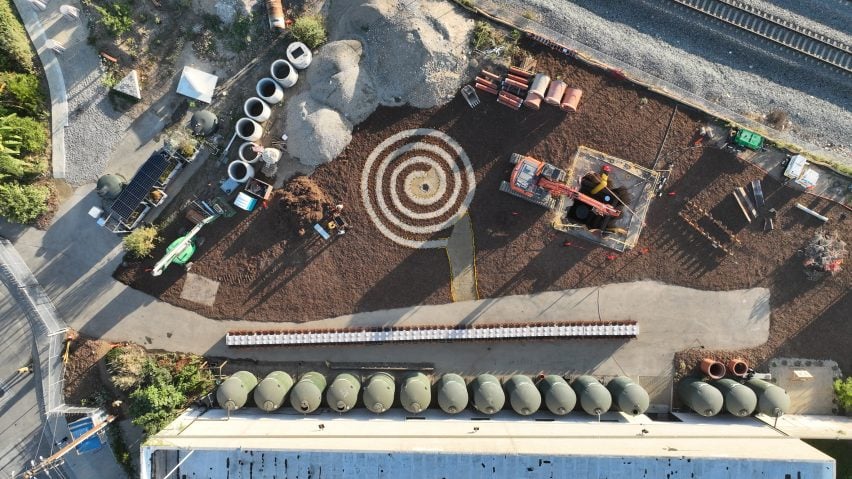
Metabolic Studio diverts LA River water to "facilitate natural systems that want to repair themselves"
Art and research organisation Metabolic Studio has showcased aspects of its Bending the River project, an infrastructure and art project designed to remediate water and land around the Los Angeles River.
For more than a decade, Metabolic Studio has been working with local agencies to divert water from the Los Angeles River as a source for irrigation in a region that often suffers with drought.
Metabolic Studio founder Lauren Bon has acquired the first private right to the river, which allows her to legally lift, clean, and transport one hundred and six acre-feet (123,348 cubic metres) of water to the LA State Historic Park. Much of the river is a massive, paved aqueduct that carries rainwater through the city to the ocean.
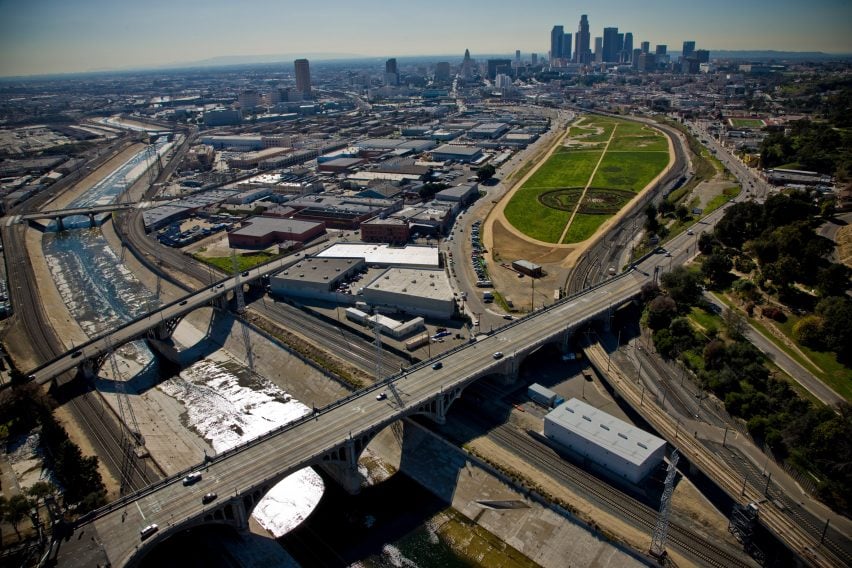
The studio has cut into the concrete canal, placed pumps and begun to source water directly from the flow.
Bon told Dezeen that the aim of the project was to "facilitate natural systems that want to repair themselves".
"When we keep floods from entering the city, we prevent all of the debris that comes with a flood from settling in these drainage basins, which is problematic over the long term, because the soil doesn't get enriched," she said. "And we don't have much soil to begin with, because we paved over everything."
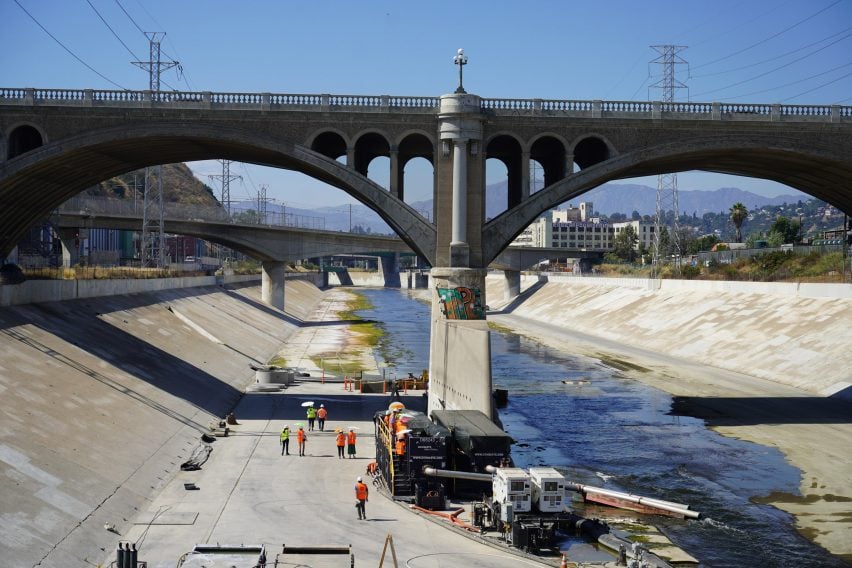
The team used industrial equipment to cut triangles into the concrete bed to the well on the studio's property, which is then transferred to local and state parks.
In order to facilitate this process, the studio received approval for as many as 100 permits from the city, state, and federal authorities.
"Over the last 10 years, we have had to garner more than 100 federal, state and local permits to do this work, which is truly the most absurd part of this whole story, because what we're doing is essentially plumbing," said Bon.
"There is no trick pony in this. In this situation, this is gravity-fed water moving from one place to another with no power needs."
From the primary "mother well" aspect of Bending the River, several engineering, design and art projects have been spun out.
The two primary side projects are natural filtration systems and the shepherding of biological matter that was discovered underneath the concrete when the studio carried out its excavations of the river.
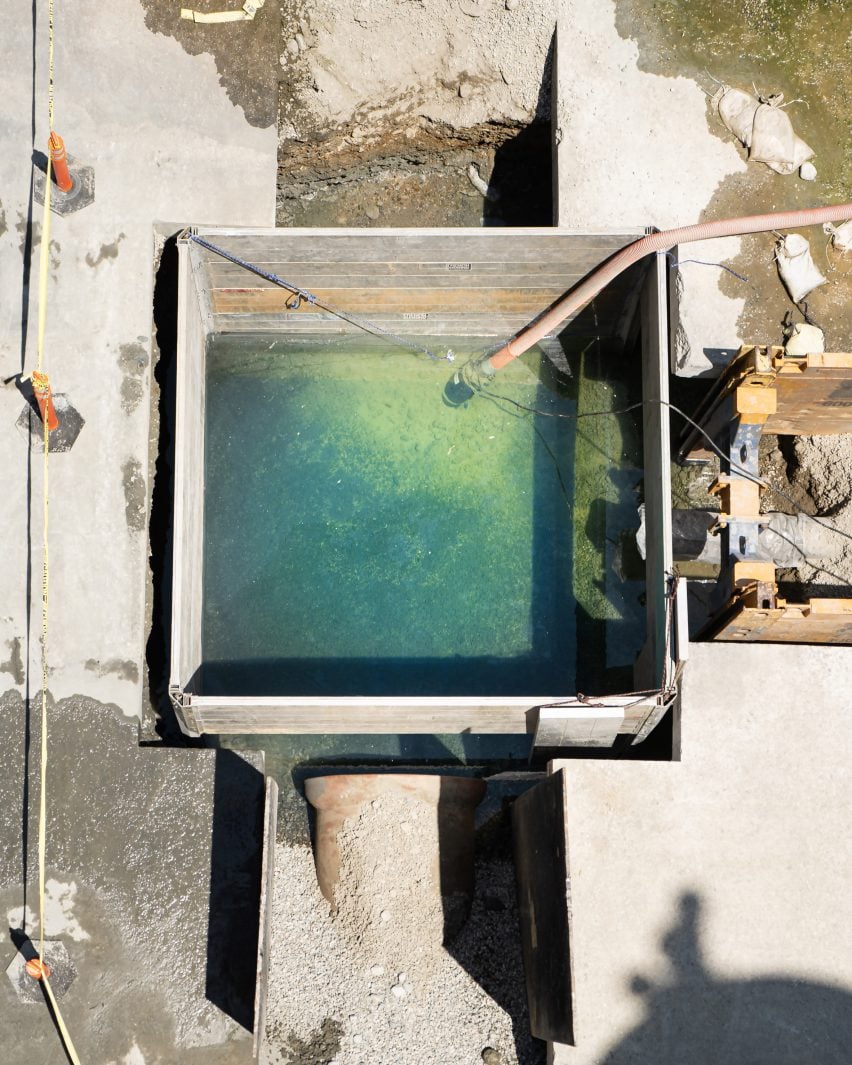
At the outset of Bon's experimentation with using LA River water, there were concerns raised by the city and her team over the filtration of the water, which is contaminated by the urban run-off.
However, Bon wants to avoid using chemicals for the process and experimented with natural solutions – currently her team includes a professional mycologist who experiments with fungi's ability to cleanse water of harmful materials.
"We're thinking through how to utilize what has stayed alive in natural systems into our water treatment so that we're not killing everything off in the water that does have pathogens that we need to take care of."
"Rather than just adding chlorine, which has a really heavy carbon imprint and kills everything in the water."
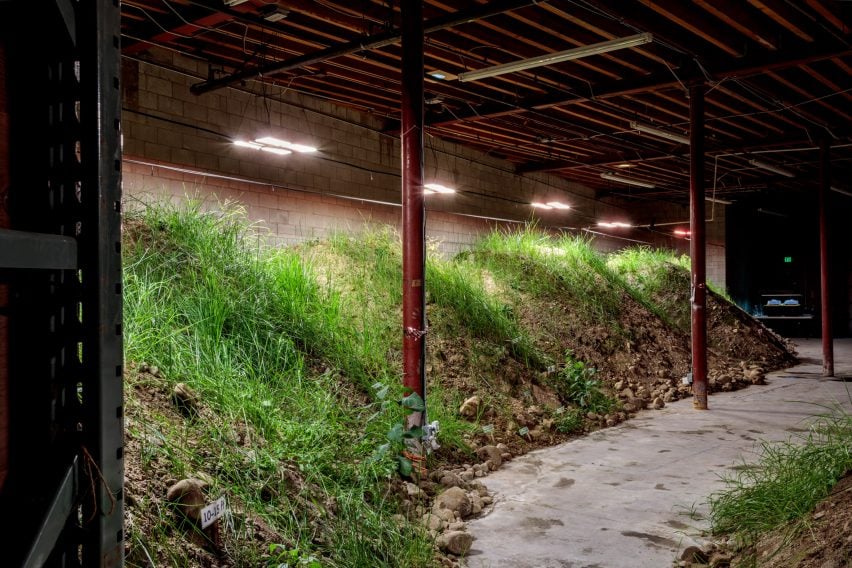
Some of the potential methods have been illustrated through a conceptual artwork called Portable Wetland for Southern California.
It is part of the studio's ongoing experimentation of alternative methods of cleansing wastewater.
The work was initially developed by Bon and her studio as part of Bending the River, as an experimental, natural cleansing method that passes the LA River water into an artificial treatment wetland comprised of native plants mimicking the means by which wetlands naturally cleanse water.
A version made for the PST ART exhibition Brackish Water Los Angeles is a conceptual artwork to demonstrate the studio's experimental proposal to naturally cleanse the water.
On the other hand, Bon and her team were surprised to discover that seeds and other living matter were still present in the soil dug up to place the well.
Some of this soil was placed in mounds inside of the Metabolic Studio headquarters, where it has begun to bloom after being given light and water.
Research on these native plants was conducted and other areas around the river controlled by the studio have been converted into gardens, where paving has been removed and plantings mixed with artwork.
Bon calls these areas "un-developments" and plans to continue to use them as places to put debris from the river and from the well projects, alongside artworks.
Bon believes that infrastructure should be viewed as material to work with and that one shouldn't see the difference between natural and human-made systems as black and white.
"The idea of enchantment is very much a part of the Metabolic Studio practice – how do we make things that feel enchanted, so that you want to understand more about what's happening?" she said.
"There is this excitement about infrastructure when people go to see the Hoover Dam or Lake Powell or a new bridge – devices of wonder. How can we create devices of wonder through these cyborg entities that are both nature and urban?" she continued.
"This most desperate place on Earth, possibly one of them, this industrial corridor, is so alive just under the crust."
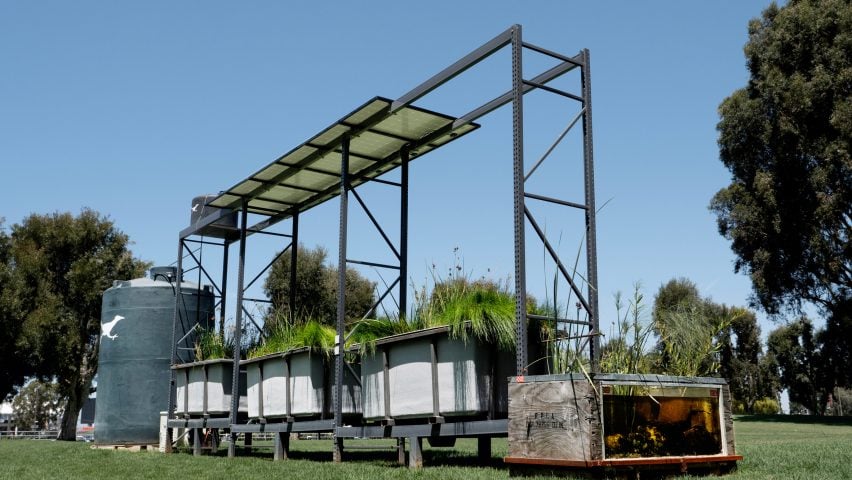
The team expects the pumps to be fully functional within the next year and even plans to pump some of the water through the studio's headquarters to demonstrate the reinstatement of the distribution of water.
The project was supported by the philanthropic organisation The Annenberg Foundation, where Bon sits on the board.
The Los Angeles River has been the subject of a number of potential redesign projects. Architect Frank Gehry was selected in 2015 to redesign parts of it to rewild and make it more accessible to communities.
The photography is courtesy of Metabolic Studio.